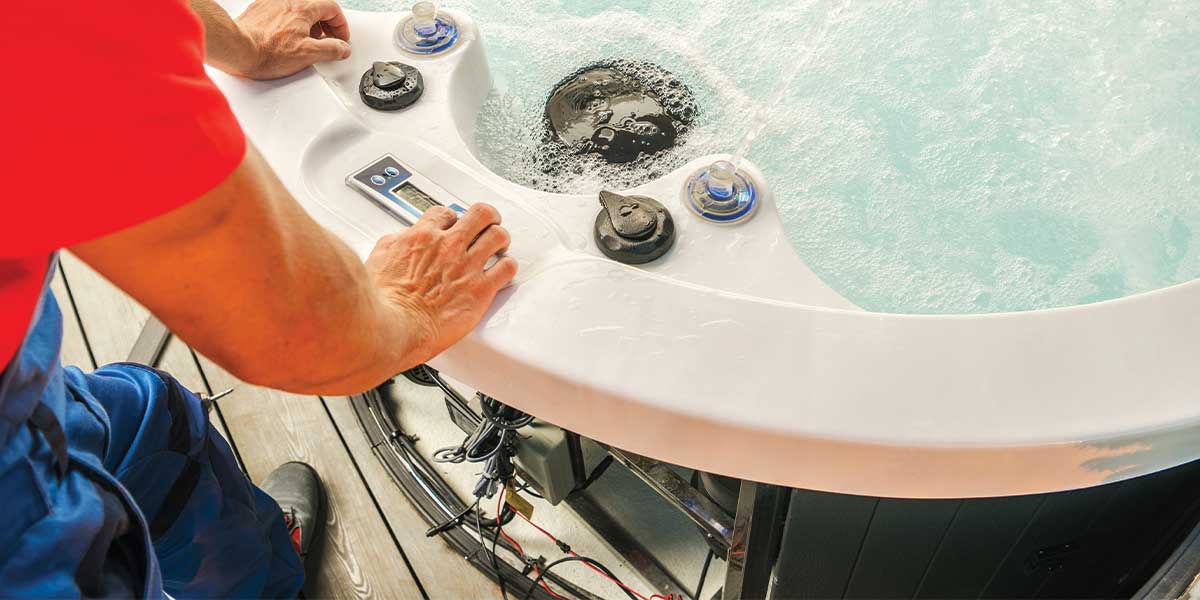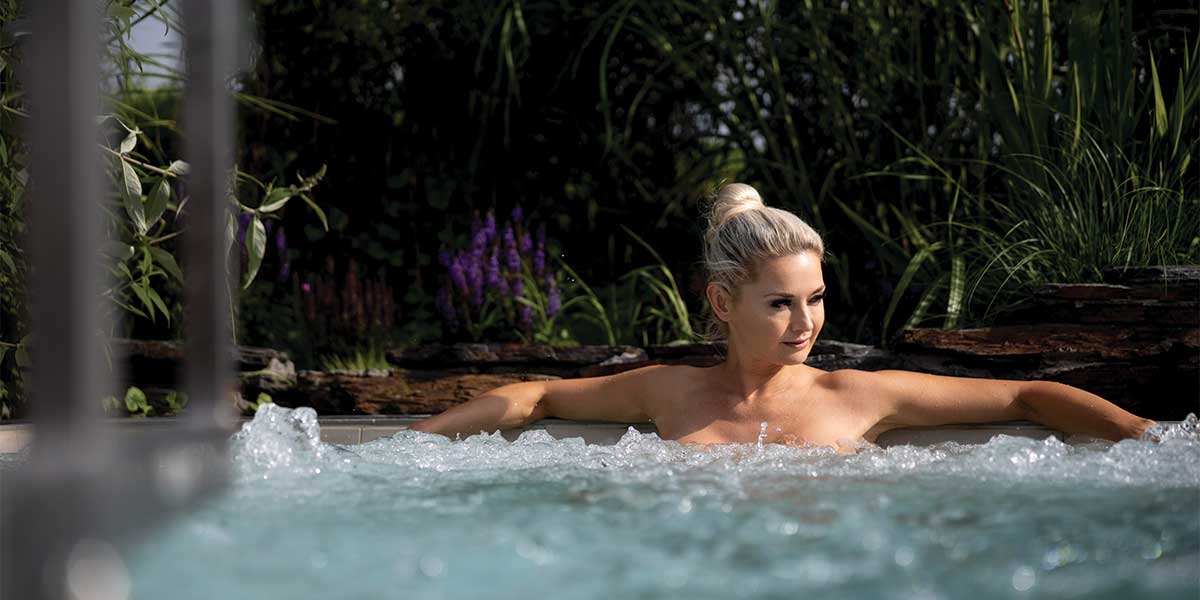Tips on Hot Tub Safety
Relaxing in your hot tub after a long day is a luxury that should come without safety worries. However, without implementing proper tips on hot tub safety and understanding hot tub electrical requirements, your backyard retreat could become hazardous. This guide by Expert Electric explores actionable and professional insights to ensure your hot tub remains safe, compliant, and stress-free.
Understanding Hot Tub Electrical Requirements
Hot tubs require dedicated electrical setups. Unlike smaller outdoor appliances, a hot tub demands a significant amount of power, often operating on a 240-volt circuit with a dedicated GFCI (Ground Fault Circuit Interrupter) breaker. This breaker protects users from electrical shock hazards by instantly cutting off power if any imbalance occurs.
Before installation, consult a certified electrician to evaluate your electrical panel’s load capacity. The Canadian Electrical Code mandates that hot tubs must be wired with proper bonding and grounding to eliminate stray voltage risks. Avoid using extension cords or undersized wiring as these pose severe fire and shock hazards.
Choosing the Right Location for Safety
Choosing a location away from overhead power lines, water sources, and trees is crucial. Your hot tub should be placed on a stable, level foundation to avoid tipping or shifting, which can damage electrical connections. Additionally, ensure there is at least a 5-foot clearance from outlets or electrical panels to meet safety codes.
Installing GFCI Breakers for Hot Tubs
GFCI breakers are mandatory for hot tub installations in Canada. They detect the smallest leakage currents and disconnect power within milliseconds to prevent electrocution. If your hot tub is hardwired, a disconnect panel with a GFCI breaker should be installed at least 5 feet from the tub but within sight for quick emergency shutoff access.
Importance of Professional Electrical Installations
While DIY installations may appear cost-saving, hot tub electrical work requires precision and strict code compliance. Hiring licensed electricians like Expert Electric ensures:
- Correct wire sizing and circuit calculations
- Proper bonding and grounding
- Safe conduit placement
- Inspection approvals for insurance compliance
Regular Maintenance and Safety Inspections
Annual inspections by certified electricians prevent hidden electrical risks. Moisture intrusion in wiring, corroded terminals, or GFCI malfunction can occur over time. Regular maintenance also prolongs equipment life, reduces energy consumption, and ensures your family’s safety.
Child and Pet Safety Precautions
Children and pets are curious and unaware of hot tub dangers. Always keep your hot tub covered and locked when not in use. Teach children never to touch electrical panels or outlets near the tub and supervise them at all times while soaking.
Cover Safety for Hot Tubs
Investing in a durable, locking hot tub cover not only maintains water temperature but prevents accidental falls, drowning, and debris accumulation. Ensure your cover is easy to lift for adults but secure enough to keep kids out when unsupervised.
Electrical Wiring Codes for Hot Tubs
The Canadian Electrical Code requires that hot tubs be wired with insulated copper conductors rated for wet locations. Conduits must be watertight and bonded properly. Failure to adhere to these codes can result in permit rejections, insurance voidance, or serious electrical accidents.
Common Electrical Mistakes to Avoid
- Using general-purpose outlets instead of dedicated circuits
- Installing non-GFCI breakers
- Improper conduit sealing leading to moisture damage
- Inadequate grounding and bonding
- Overloading existing electrical panels
How Weather Affects Hot Tub Safety
Canadian winters pose unique challenges for hot tubs. Freezing temperatures can crack wiring conduits, damage GFCIs, and lead to electrocution hazards if melted snow infiltrates electrical compartments. Always winterize and perform seasonal inspections before use.
Importance of Bonding and Grounding
Bonding connects metallic components to reduce shock risks, while grounding provides a safe path for stray electricity. Both are essential to prevent electrical current from passing through water and harming users.
Using Extension Cords with Hot Tubs
Never use extension cords for hot tubs. They cannot handle the high amperage load and pose severe fire and electrocution risks. Always install a permanent, code-compliant electrical connection.
Safe Electrical Panel Placement for Hot Tubs
Your disconnect panel should be visible from the hot tub but at least 5 feet away to prevent accidental splashes. This placement ensures immediate shut-off in emergencies.
Energy Efficiency and Electrical Safety
Upgrading to energy-efficient hot tub pumps and heaters reduces your hydro bills while minimizing electrical stress on circuits. Consult electricians to optimize your setup safely.

Benefits of Hiring Certified Electricians
Certified electricians like Expert Electric guarantee:
- Compliance with Canadian codes
- Safety-focused installations
- Peace of mind with insured workmanship
- Professional advice tailored to your property’s requirements
Electrical Permit Requirements for Hot Tubs
Municipalities require electrical permits for hot tub installations. Failing to obtain one could void home insurance and lead to legal penalties if accidents occur.
Smart Hot Tub Safety Technologies
Modern hot tubs feature built-in smart GFCIs, leak detectors, and emergency shut-off switches controlled via mobile apps, enhancing user safety and convenience.
Understanding Electrical Load Capacity
Before installing, ensure your panel can handle the additional load. An overloaded panel risks constant breaker trips, appliance failures, and potential fires.
Avoiding Electrical Overload Hazards
Calculate all electrical loads and avoid plugging heavy-load appliances onto the same circuit as your hot tub. This prevents overheating and breaker failures.
Emergency Shut-Off Switches for Hot Tubs
Installing an outdoor emergency shut-off switch within sight of the hot tub allows immediate power cut in emergencies, minimizing injury risks.
Outdoor Outlet Safety Tips for Hot Tubs
Ensure outdoor outlets are weatherproof, GFCI-protected, and covered. Never use standard indoor outlets or leave plugs exposed to rain or snow.
Proper Circuit Requirements for Hot Tubs
Most hot tubs require a dedicated 50-60 amp circuit with appropriate wire size (usually #6 AWG copper) to handle the load safely. Always verify manufacturer requirements.
Water and Electricity: A Dangerous Combination
Remember that water conducts electricity. Faulty wiring, damaged heaters, or unprotected circuits can turn your hot tub into a life-threatening hazard.
Seasonal Electrical Safety Checks
Have electricians inspect connections, breakers, and wiring every spring and fall. Seasonal checks prevent moisture damage and ensure code compliance.
Why Regular Electrical Inspections Matter
Regular inspections:
- Identify hidden corrosion
- Verify GFCI functionality
- Extend equipment lifespan
- Maintain insurance compliance
Best Practices for Hot Tub Electrical Safety
- Always use licensed electricians
- Install GFCI breakers and emergency shutoffs
- Avoid extension cords
- Maintain proper clearance from outlets and panels
- Conduct annual inspections
Professional vs DIY Hot Tub Electrical Installations
DIY installations may seem affordable, but errors can be fatal. Professional installations guarantee compliance, safety, and peace of mind.
Final Checklist: Tips on Hot Tub Safety
- Consult a certified electrician
- Use a dedicated GFCI-protected circuit
- Install bonding and grounding correctly
- Keep hot tub covered and locked
- Conduct regular inspections
- Obtain necessary permits
Tips on Hot Tub Safety FAQs
What are the main electrical requirements for a hot tub?
A hot tub requires a dedicated 240-volt circuit with a GFCI breaker, proper grounding, bonding, and weatherproof electrical connections compliant with Canadian Electrical Code.
Can I install a hot tub myself?
DIY installation is risky. Hiring a licensed electrician ensures safety, code compliance, and insurance coverage.
Why is GFCI protection necessary for hot tubs?
GFCI breakers detect minor leakage currents and instantly cut power, preventing electrocution risks in wet environments like hot tubs.
Final Thought
Ensuring hot tub safety involves more than just water treatment. Understanding and implementing proper electrical requirements, hiring certified electricians, and conducting regular maintenance are non-negotiable steps for a stress-free, enjoyable spa experience. If you’re planning to install or upgrade your hot tub’s electrical system, reach out to professionals like Expert Electric for guidance rooted in expertise and safety.
Contact Expert Electric
For safe hot tub installations and electrical inspections, contact Expert Electric today.
- Phone: 604-681-8338
- Email: info@expertelectric.ca


